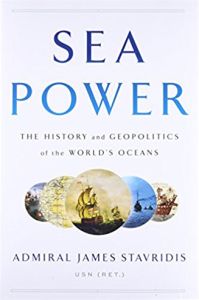Join getAbstract to access the summary!

Join getAbstract to access the summary!
James Stavidris
Sea Power
The History and Geopolitics of the World’s Oceans
Penguin Press, 2017
What's inside?
A discerning overview explores the commercial history of the Earth’s oceans and US “sea power.”
Recommendation
James Stavridis, a US Naval Academy graduate and retired four-star admiral, has more than 35 years of active service in the US Navy. He served as NATO’s Supreme Allied Commander for Global Operations. While in the Navy, he sailed the world’s oceans and seas for decades. Stavridis leverages his remarkable naval background and experience to explain the basics of “sea power” and its strategic military and commercial importance. His comprehensive overview of sea power is accessible and relevant, as well as timely in today’s contentious political environment, which demands constant awareness of what’s happening on every sea and ocean. Stavridis helps you understand how and why a navy becomes an extension of its nation’s will. His comprehensive overview of sea power is relevant and timely.
Summary
About the Author
Admiral Jim Stavridis, USN (Ret.), a graduate of the US Naval Academy, spent decades on active duty. He also served as Supreme Allied Commander for Global Operations at NATO.


















Comment on this summary